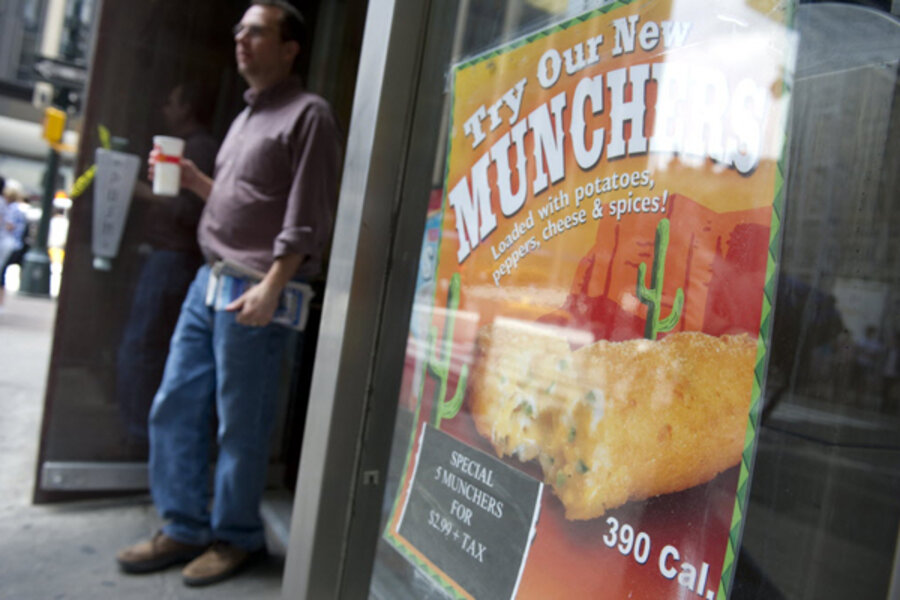Do posted calorie counts help people make healthy choices?
Loading...
Have you seen numbers on your menus lately, such as, 410 calories for a bagel and cream cheese, 190 calories for a latte, 1,815 calories for a chicken burrito? Those guilt-inducing numbers are popping up on menus more and more often.
Since 2008, when chain restaurants in New York were first required to post calorie counts on their menus, the practice has spread to other areas, including Seattle and California. Next year menu labeling will go national; under President Obama’s Affordable Care Act chain restaurants with 20 or more locations will be required to post calorie counts on their menus.
But does the number next to your favorite salad, burger, or taco really make you think twice before ordering?
Several studies show that even with the nutrition information clearly visible, consumers still order what tastes good, rather than the healthiest choice.
A study by New York University asked participants in New York City to turn in their food receipts both before and after calorie counts were posted on menus.
While most study participants said they noticed the calorie count, and 28 percent even said they were even “influenced” by the information, the researchers found no difference in the total number of calories people purchased.
"No matter how we cut this, no matter what we controlled for, no matter what sub groups we looked at, there was no difference in the total calories purchased," said Dr. Brian Elbel in an interview with the University of Pennsylvania. Elbel is the director of the research, and an assistant professor of medicine and health policy at the NYU School of Medicine.
Elbel’s study placed a special emphasis on teenagers, and found that taste, not nutrition, was the most important factor for teens when deciding what to order. Healthier options also took a backseat to price.
Elbel and his team found that many teens, and adults, too, had no frame of reference for how the calorie count of a particular item impacted their daily diet.
“We asked consumers, ‘How many calories do you think you should eat to maintain a healthy weight?’” Elbel said. “The majority of people didn’t have a good sense of this.”
Researchers at Duke University came to the same conclusion when they looked at 14 locations of Taco Time, a west coast Mexican chain. They found calorie count menu labeling had no effect on customers’ purchases.
A study of Starbucks customers by Stanford University found the effect of labeling was negligible; calorie count labeling only decreased customers’ average caloric intake by about 15 calories.
Despite the fact that customers are still ordering Big Macs and Whoppers, even though they contain 560 and 640 calories respectively, Elbel still thinks the menu labeling is worthwhile.
“There’s a chance that labeling might influence food choice in the longer term as more people see this information,” he said. “But at the same time, our findings tell us we can’t sit back and think that we have labeling and obesity’s going to be solved now.”
While menu labeling doesn’t seem to influence the choices customers make, another study found it may have an impact on the ingredients restaurants use.
Researchers at several leading nutrition and pediatric institutions in Seattle studied 37 sit-down and quick service burger, pizza, sandwich, and Tex-Mex chains in the area.
They found that 18 months after the menu labeling law was implemented, calorie counts in some of those restaurants had dropped. Calorie counts fell an average of 7 percent in sit-down restaurants, less in fast food restaurants, and were unchanged at pizza restaurants.
The researchers suggested that perhaps restaurants are beginning to turn to lower-calorie ingredients as a way of getting those numbers lower on the menu.
The Seattle study concluded that while, “modest improvements,” had been made, “overall levels for energy, saturated fat, and sodium are excessive.”







